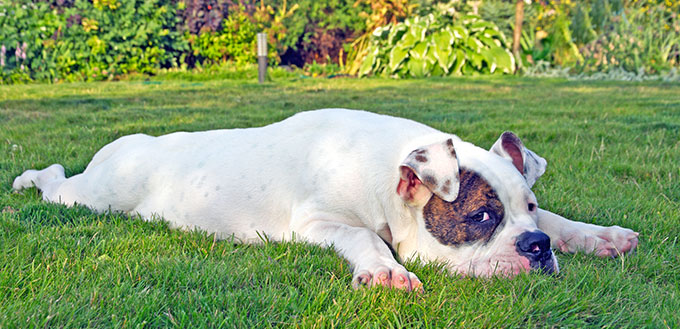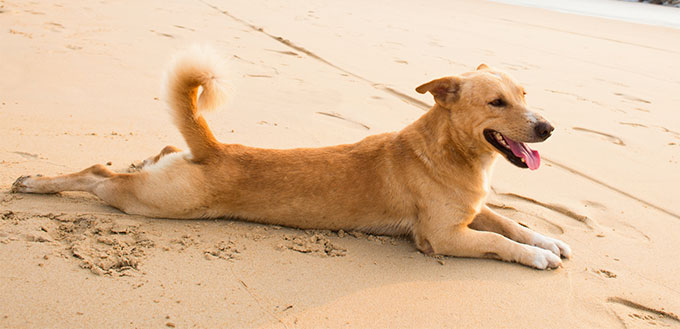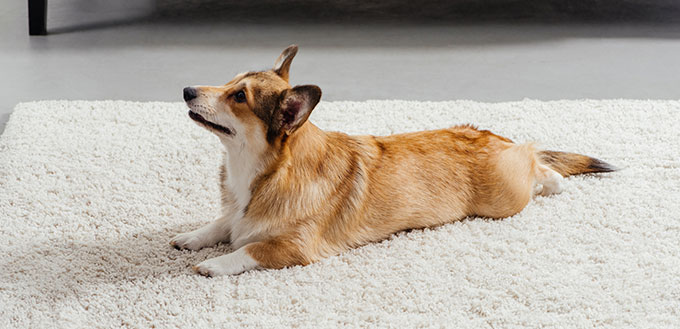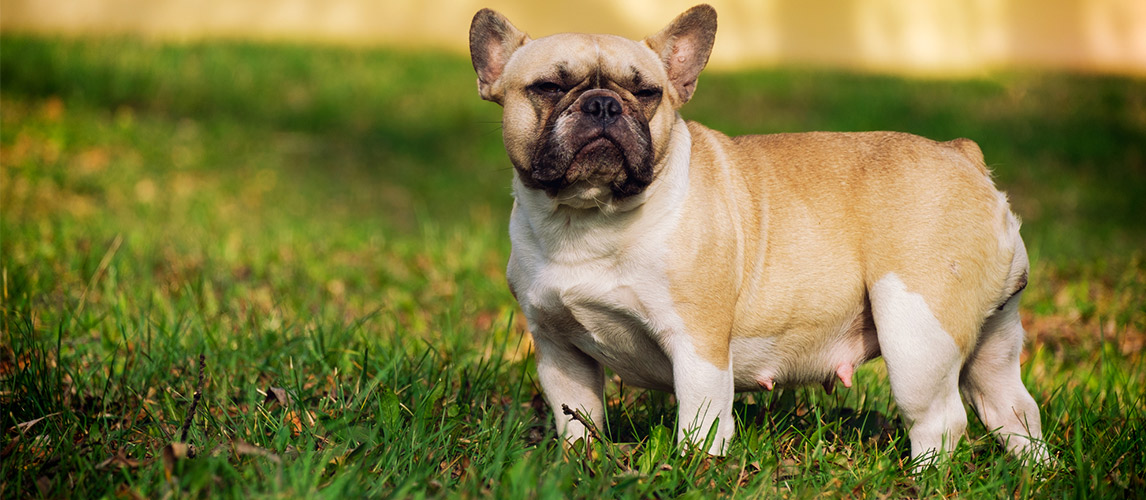Dogs have several ways of being adorable, don’t they? A lot of dog owners cannot help but capture as much as of the several adorable moments as they can. Well, in case you might not have noticed, there is one more thing to find adorable about your dog – dog sploot. If you are reading this, then the chances are that you already know that dog splooting is not some kind of a new thing in town. Dogs sploot all the time. It is part of their behavior. But if you are curious as to exactly what splooting is and why dogs sploot, then you have come to the right place. Be careful, though; this article is packed with the word adorable.

What Is a Sploot?
So, first things first. What is a sploot? If you are a dog owner, the chances are that you may have noticed your dog lay down with back legs out in the most adorable manner. This position is called a sploot. Instead of tucking their hind legs underneath their underbellies like they usually do, they stretch them out behind them. It is important to note, however, that although splooting is not an uncommon thing, not every dog has the habit of splooting. That in no way means that other dogs cannot sploot. It only means that they do not have that habit. That has not stopped the other dogs that love to sploot. And chief among them is the corgi sploot. Plus, dog owners who are lucky enough to experience the adorable sight of their dogs splooting, have wasted no time flooding the internet with photographs of the adorable scenes.
Why Do Dogs Sploot?
Despite the fact that a dog splooting is such an adorable sight, there are reasons why they do it. Please note, however, that the possible causes mentioned in this article have not been scientifically proven. Here are some of the causes of splooting in dogs.
- Relaxation: One quick look at a dog splooting, and nobody should tell you that it feels relaxed. Dogs love to feel comfortable. And, dogs that are in the habit of splooting find the position very comfortable and relaxing. With their back legs stretched out behind them, dogs get to lie on their underbellies comfortably.
- Stretching Out: Aside from the fact that it offers them a very comfortable position to lie in, one of the most probable reasons why dogs sploot is because it gives them the chance to stretch out their legs and hips. Indeed, it also helps them to stretch out the whole body in one still position.
- Hip Flexibility: Some dogs are born with very flexible hips and hind legs. Thus, splooting comes naturally to them at a young age, and they carry the habit on to adulthood.
- Cooling Down: Splooting also helps dogs to cool down on a cold floor. It is an effective way to let go of some heat when the hind legs are spread out, and the underbellies make full contact with the cold floor.

Types of Splooting
There are three main types of sploots. These are the full sploot, the half sploot, and the side sploot.
- The full sploot: Here, both hind legs of the dog will be spread out behind it. This is the most popular type of splooting.
- The half sploot: This happens when the dog stretches out only one hind leg and leaves the other one tucked under its belly.
- The side sploot: This is almost like the half sploot. However, the difference here is that instead of stretching out one hind leg backward, the dog stretches it to the side while the other hind leg remains tucked under its belly.
When Is Splooting a Bad Sign?
Generally, there is nothing to worry about when your dog sploots regularly. Some dog experts have suggested that regular splooting can be one of a dog’s means of trying to get some attention from its owner. However, no matter how adorable splooting is, there are certain instances that should cause you to worry or, better still, visit the vet immediately.
- Limping: If there is some limping accompanying your dog’s sploot, then you should visit the vet as soon as possible, as this is a sign of an injury.
- Itchiness and rash: Sometimes, severe itchiness and rash can cause your dog to sploot as a means of scratching its underbelly. There are several causes of rash and itchiness. Check your dog’s underbelly for red spots, bumps, or inflammation of the skin. If any of these signs are visible, take your dog to the vet immediately.
- Lethargy: If splooting is accompanied by lethargy for very long hours, something could be wrong. It is possible that your dog may just be feeling lazy. But if that continues for days and is accompanied by a lack of appetite, then something else could be wrong. You need to get your dog examined by a vet.
The Corgi Sploot
As mentioned earlier, the corgi dog seems to be the pacesetter when it comes to splooting adorableness, although the habit is not limited to any specific breed of dog. Why is the corgi dog more fond of this habit than other dogs? The answer is not known yet. However, some have decided to blame the habit on the sheer silliness that the corgis come with. The only thing that is certain is that they are a bundle of adorableness when they sploot.
Related Post: Corgi Puppies for Sale

To Summarize
In conclusion, when your dog lays down with back legs out (aka splooting), this is nothing to be concerned about unless it is caused by an injury or sickness. In such cases, you should not hesitate to visit the vet. Although the habit is a common one among dogs, not all dogs exhibit it, unfortunately. It does not mean that the other dogs cannot do it. It is either just not a habit they have, or they simply require some privacy before they can feel comfortable enough to sploot. Until that happens, you can only admire the adorable photos of the ones that you find on the internet.







4th kind of sploot – my Basset crosses his hind legs when he sploots.